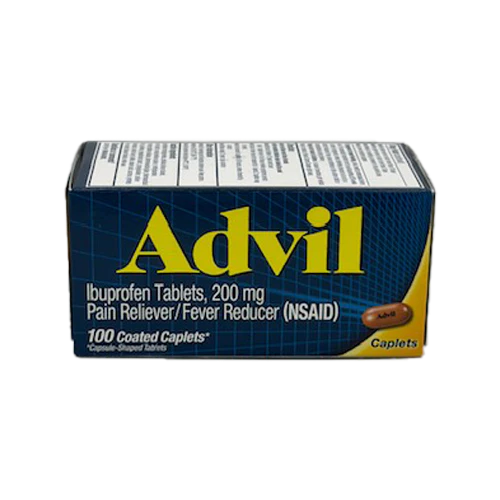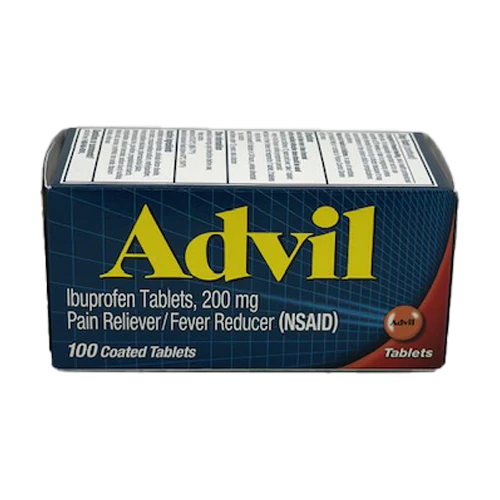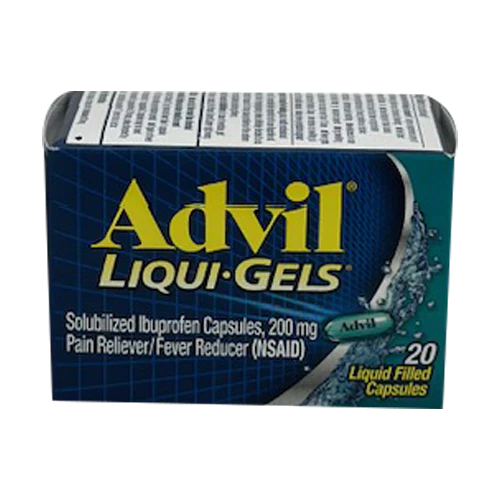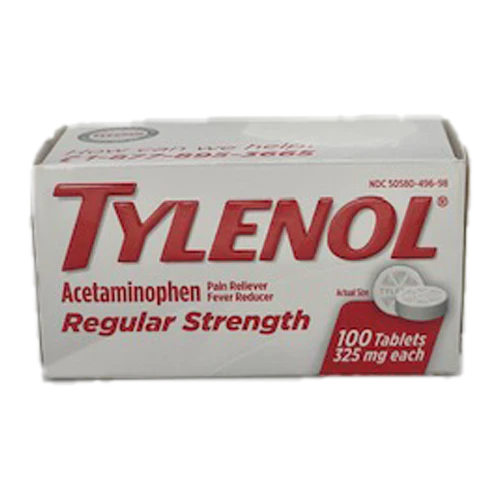Migraines and Treatments
Treatment options for migraines: Natural Products, OTC medications, Prescription medications
- Prescription medications for pain relief include triptans, ergotamines, and butalbital-containing medications
- Triptans are a first-line treatment. Ergotamines are prescribed when triptans don't work.
- Preventive drugs include beta blockers, anti-epileptic drugs, and calcitonin gene-related peptide (CGRP) receptor antagonists
- Preventive drugs are used to decrease the frequency of migraines. They are taken when you feel well, and are not effective once a headache is present.
Although more than 40 million individuals in the U.S. and a billion worldwide suffer from migraines, it has long gone unrecognized as one of the most incapacitating illnesses.
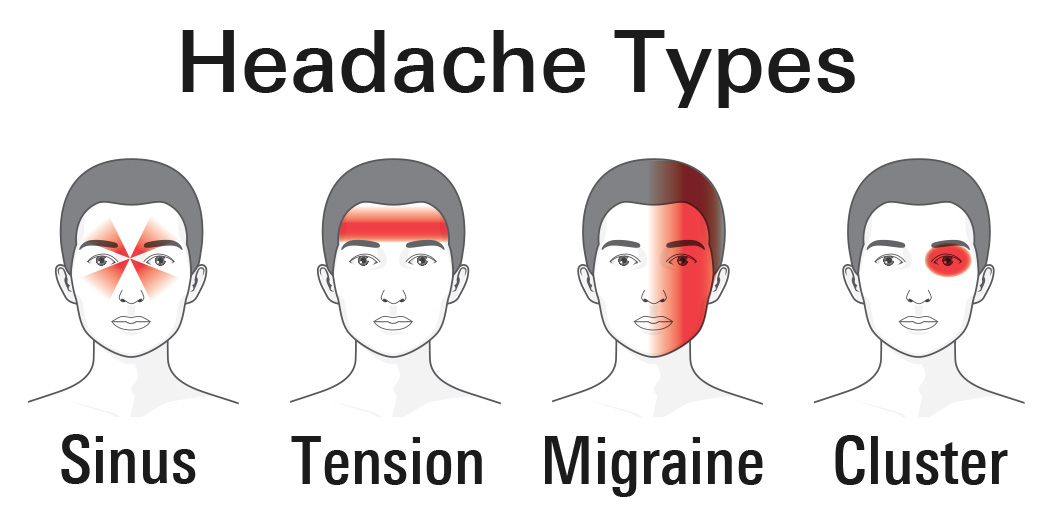
What are Migraines?
Migraines are chronic (long-term) headaches that cause significant pain for hours or days. The forehead, the side of your head, or the area surrounding your eyes are where the pounding or pulsing pain generally starts. Most migraines cause nausea, vomiting, and sensitivity to light and sound.
Certain migraines are accompanied by sensory warning symptoms or signs, referred to as auras, such as flashes of light, blind spots, or tingling in your arms or legs. However, most migraines do not have an aura.
A headache accompanied by fever, stiff neck, rash, confusion, seizures, double vision, weakness, numbness, chest pain, shortness of breath, or aphasia (trouble speaking), could indicate a serious cardiovascular, cerebrovascular or infectious disease. Individuals with these symptoms should seek immediate medical attention.
What Causes Migraines?
The exact cause of migraines is unknown, however, they are thought to be the result of changes in the trigeminal nerve, which helps your face recognize pain and touch sensations, and imbalances in neurotransmitters, such as serotonin. The decrease in neurotransmitters causes a release of neuropeptides that trigger vasodilation (widening) in cranial blood vessels.
In other words, serotonin affects your blood vessels and has numerous physiological impacts. High serotonin levels cause blood vessels to narrow (shrink). Your blood vessels dilate (swell) when serotonin levels drop. Various issues or pain may result from this swelling.
What are Migraine Triggers?
Individuals should identify and avoid 'triggers' to reduce migraine incidences. Common migraine triggers include:
Hormonal changes in women
- Fluctuations in estrogen may trigger headaches in many women, such as from their menstrual cycle, menopause, or the use of hormonal birth control or hormone replacement therapy.
- A common type of migraine is menstrual-associated migraine (MAM) in women. This condition can be treated with oral contraceptives, or the estradiol patch to decrease their frequency.
- Women who have migraines with aura are at a higher risk for stroke and should not use estrogen-containing contraceptives. Due to this risk, progestin-only pills are recommended for women with migraine with aura.
Foods
- Common items to avoid include alcohol, especially beer and red wine, aged cheese, chocolate, sweeteners containing aspartame, overuse of caffeine, salty foods, and processed foods.
- Stress is a major cause of migraines. Feeling overburdened at work or home is a sign of stress.
Sensory stimuli
- Bright lights, sun glare, loud noises, and certain scents that may be pleasant or unpleasant.
Changes in your wake-sleep cycle
- Either missing sleep or getting too much sleep, including jet lag.
Changes in the environment
- A change of weather or atmospheric pressure.
How Are Migraines Diagnosed?
Migraines are diagnosed when individuals have at least 5 attacks fulfilling the following criteria:
- Headaches that last 4–72 hours and recur sporadically
- Headaches that have more than 2 of the following characteristics: unilateral locations, pulsating, moderate-severe pain, and aggravated by, or causing avoidance of routine physical activity
- One of the following occurs during the headache: nausea and/or vomiting, photophobia (sensitivity to light), and phonophobia (sensitivity to sound).
What are Treatment Options for Treating Migraines?
There are a few options to treat migraines. You can try natural products or over-the-counter medications. When OTC medications don’t work, your doctor may recommend prescription medications. They come in two categories: pain-relieving (acute treatment) and preventive medications.
Natural Products
Common natural products that have been used for migraine:
- Caffeine
- Caffeine is found in many over-the-counter (OTC) pain relievers and is effective in combination with acetaminophen or aspirin to treat migraine headaches
- However, both caffeine consumption and withdrawal can act as migraine and headache triggers.
- Magnesium
- According to research, magnesium may be an effective acute (short-term) treatment option for headaches such as migraines, tension-type headaches, and cluster headaches, particularly in certain patient subsets. It’s also well-tolerated, safe, and affordable for migraine prevention.
- Butterbur
- A plant that’s also known as Petasites hybridus
- Petasites are beneficial for preventing migraines when taken in 50-75 mg dosages twice daily.
- Feverfew
- An herb that’s also known as Tanacetum parthenium
- Has been used to treat a variety of conditions, such as fever, swelling, and/or inflammation.
- Riboflavin
- Also known as vitamin B2, assists your body's process of converting food (carbohydrates) into the fuel (glucose) needed to produce energy.
- Although not enough research has been done, it has been demonstrated that riboflavin decreases the number of migraine attacks individuals encounter monthly.
- Peppermint
- Applied topically (directly to the body)
- Menthol, the main component of peppermint oil, is offered in liquid pill form. For simple brewing, tea variants are also available.
- In a 2010 study, menthol in a 10 percent solution was found to be efficient at reducing migraine pain and nausea when applied to the forehead and temples.
- Coenzyme Q10
- Applied topically (directly to the body)
- Shown to have a positive impact on decreasing migraine attack frequency, headache duration during an attack, and reducing the number of total migraine days per month.
Acute (short-term) Drug Treatment—OTC Medications
Acute, or “abortive,” treatment is used for a headache that’s already present. You should start this type of treatment as soon as you think you’re getting a migraine. There are many choices for acute treatment, including OTC medications that are used for mild to moderate migraines, such as:
- Acetaminophen (brand: Tylenol)
- Advil Migraine (generic: Ibuprofen)
- Excedrin migraine (a brand drug that contains aspirin, acetaminophen, and caffeine)
- Aleve (generic: Naproxen): Nonsteroidal anti-inflammatory drug (NSAID)
Some individuals get more relief from OTC medications, some from prescription medications, such as triptans, and others need to use a combination of both. Individuals with nausea and vomiting may benefit from combined treatment with antiemetic medications (a drug class of medications that prevent nausea and vomiting).
Prescription Medications
Prescription medications fall into two broad categories: pain relief and preventive drugs.
Prescription Medications for Pain Relief
Triptans: selective serotonin receptor agonists
Triptans cause vasoconstriction of cranial blood vessels, inhibit neuropeptide release, and decrease pain transmission. This reduces the sensitivity of overactive pain nerves. Triptans thereby reverse the changes in your brain that led to your migraine. This drug class is considered a first-line treatment for acute migraines.
Examples of triptans include:
- Almotriptan 6.25–12.5 mg
- Eletriptan (brand: Relpax) 20–40 mg
- Frovatriptan (Frova) 2.5 mg (initial treatment dose)
- Naratriptan (Amerge) 1–2.5 mg
- Rizatriptan (Maxalt, Maxalt-MLT) ODT 5–10 mg
- ODT (orally dissolving tablet): dissolved on the tongue rather than swallowed whole. ODT is useful if nausea is present.
- Sumatriptan (Imitrex, Onzetra Xsail) 25, 50, or 100 mg
- Imitrex nasal spray: 5, 10, or 20 mg in one nostril. Can repeat 1 time after 2 hours. Nasal sprays tend to work faster than oral medications.
- Onzetra Xsail powder: 11 mg in each nostril using a nosepiece. Can repeat 1 time after 2 hours.
- Treximet (brand drug containing active ingredients sumatriptan and naproxen) 85-500 mg
- Zolmitriptan (Zomig) 1.25-5 mg
- Available in tablets, ODT, and nasal spray 2.5–5 mg
Common side effects of triptans include:
- Paresthesia (tingling/numbness)
- Dizziness
- Hot/cold sensations
- Chest pain/tightness
- Dry mouth
- Nausea
- Sleepiness
- Numbness
- Throat and/or neck pressure
If nausea prevents you from swallowing or holding down your medication, your healthcare provider can prescribe a tablet that dissolves in your mouth (ODT) or a nasal spray.
Ergotamine drugs: nonselective serotonin receptor agonists
Ergotamines cause cerebral constrictions. Additionally, ergotamines may reduce pain and inflammatory signals in sensory brain nerves.
Ergots work best when taken at the first sign of a migraine attack. However, they cannot stop migraines or lessen the frequency of attacks.
In individuals with contraindications (unable to take) triptans or who don’t find benefits with triptans, ergotamine is generally used next.
Examples of ergotamines include:
- Dihydroergotamine (brand: Migranal nasal spray) 1 spray (0.5 mg) into each nostril, can repeat after 15 minutes, up to a total of 4 sprays (2 mg)
- The nasal spray should be primed by pumping 4 times. Do not inhale deeply (to let the drug absorb into the skin in your nose).
- Use at the first sign of attack, but can be used at any time during a migraine
- Side effects of the nasal spray include rhinitis (stuffy nose), dysgeusia (altered sense of taste), nausea, and dizziness.
- Ergotamine + caffeine (Cafergot: 1 mg ergotamine + 100 mg caffeine)
- Take 2 tablets at onset of migraine; then take 1 tablet every 30 minutes as needed to a max of 6 tablets per attack.
Butalbital-containing medications
Stronger painkillers, such as narcotics or medications containing a barbiturate (sleep-inducing medicine), for example, acetaminophen/butalbital/caffeine (brand: Fioricet) and aspirin/ butalbital/caffeine (brand: Fiorinal) are available in combinations with codeine, such as Fioricet with codeine and Fiorinal with codeine. They may be required if your migraine pain won't go away.
These products are federally classified as schedule III, except Fioricet. Use caution when taking these medications as they have the potential to become habit-forming. If necessary, use only for a brief length of time. Your doctor may prescribe these medications, however, butalbital-containing products are not recommended for treating acute migraines due to the abuse/dependence issues and lower efficacy.
Prophylactic (preventative) Drug Treatment
Some individuals require a prophylactic (preventative) medication to decrease the frequency of migraines. These medications are taken when you feel well, and are not effective once a headache is present.
Prophylactic treatment should be considered if you use acute treatments for more than 2 days a week, more than 3 times per month, if the migraines decrease your quality of life, or if acute treatments are ineffective or contraindicated.
A prophylactic agent is chosen based on an individual’s characteristics and the side effect profile of the medication because efficacy data is similar for all (approximately 50% reduction in headache days). A full trial, at a reasonable dose, should be 2–6 months. Many individuals try more than one medication before finding one that works well for them.
Prophylactic (preventative) therapies include:
Beta-Blockers
- Propranolol (brand: Inderal LA) 80-240 mg
Common side effects may include fatigue, decreased heart rate, and possible depression - Timolol 10 mg twice daily
- Metoprolol (Lopressor, Toprol XL) 100-200 mg daily
Anti-epileptic drugs
- Divalproex (Depakote) 250–500 mg twice daily
- Black Box Warning: This medication may cause fetal harm, liver failure, pancreatitis
- Common side effects include weight gain, thrombocytopenia (low platelet levels in your blood), increased ammonia, alopecia (hair loss), nausea and/or vomiting, tremor, and ovarian syndrome.
- Valproic acid (Depakene) 250–500 mg twice daily
- Black Box Warning: This medication may cause fetal harm, liver failure, pancreatitis
- Common side effects include weight gain, thrombocytopenia (low platelet levels in your blood), increased ammonia, alopecia (hair loss), nausea and/or vomiting, tremor, and ovarian syndrome.
- Topiramate (Topamax) starts at 25 mg every night at bedtime, titrate to 50 mg twice a day
- Warning: This medication may cause fetal harm, metabolic acidosis (excessive acid accumulation in your body), nephrolithiasis (kidney stone), increased ammonia, open-angle glaucoma, and oligohidrosis (the inability to sweat).
- Common side effects include weight loss, sleepiness, and cognitive impairment.
Calcitonin Gene-Related Peptide (CGRP) Receptor Antagonists
CGRP is a molecule typically involved in migraine episodes. CGRP receptor antagonist is a human monoclonal antibody that targets high levels of CGRP in the blood of individuals with migraine headaches. This can also help stop migraine pain and any inflammation (swelling) in your brain.
- Nurtec ODT 75 mg daily
- Can treat migraines and also prevent them from occurring.
- This medication is only available as a brand drug.
- Common side effects include nausea.
Speak With Your Doctor
If you frequently suffer from migraines, you may feel like you don’t have complete control over your life. Talk to your doctor today to take back control and send your prescription to Marley Drug. Save up to 95% compared to your local pharmacy by using Marley Drug.
